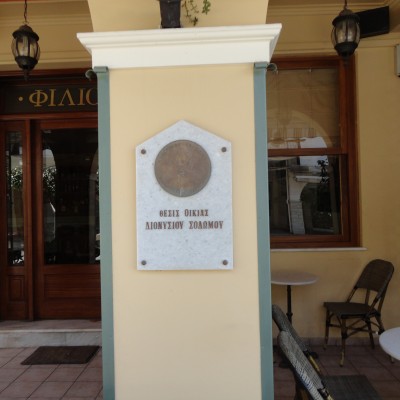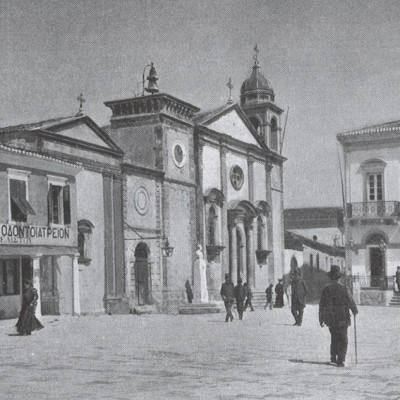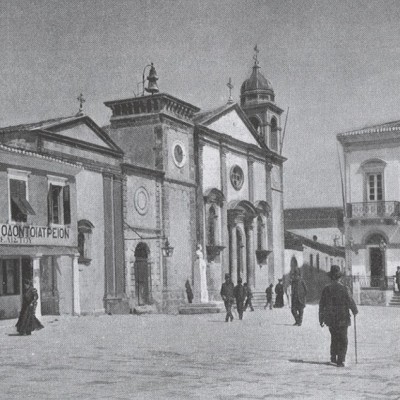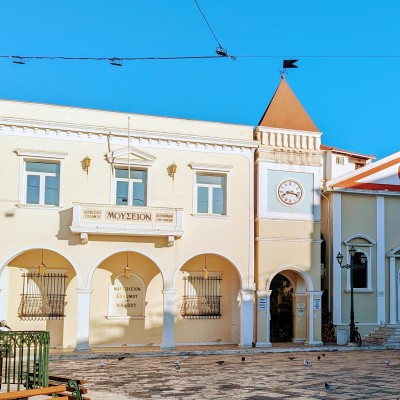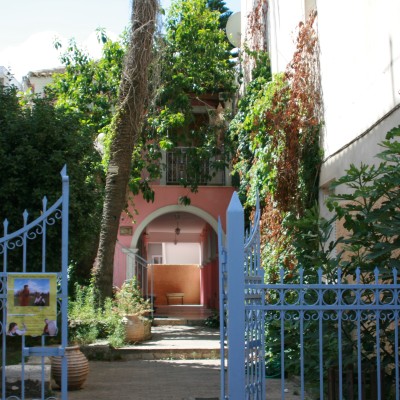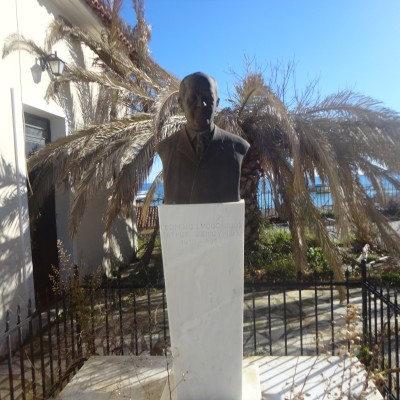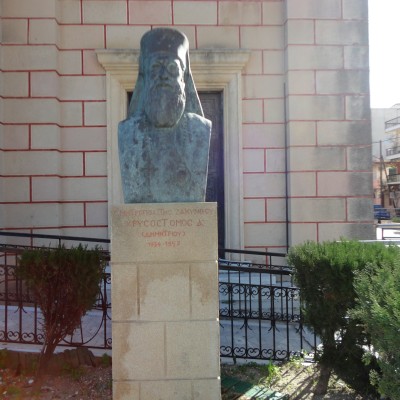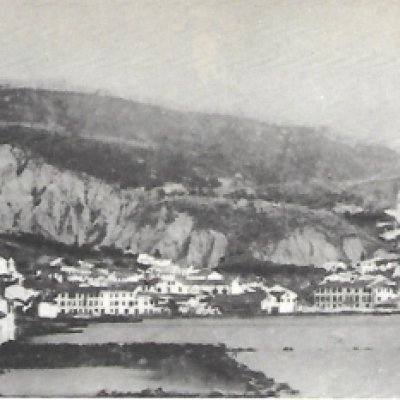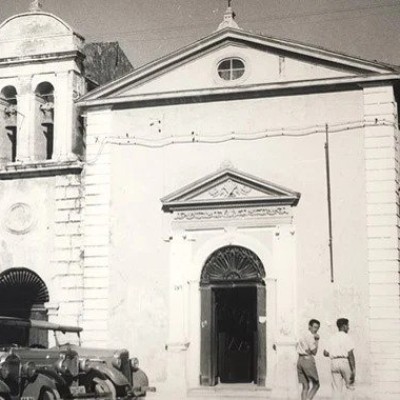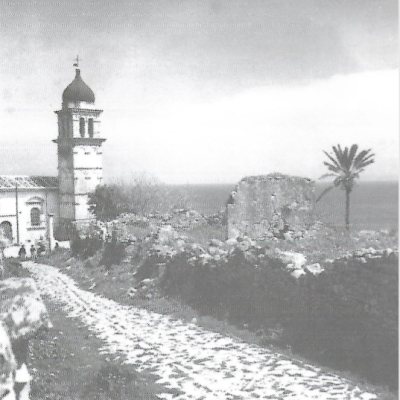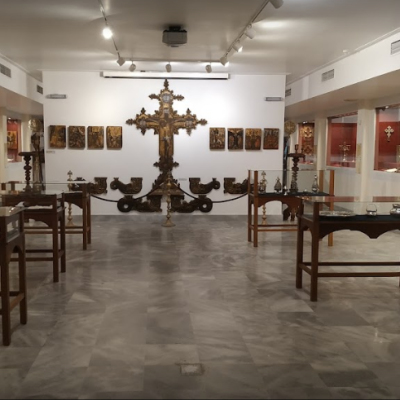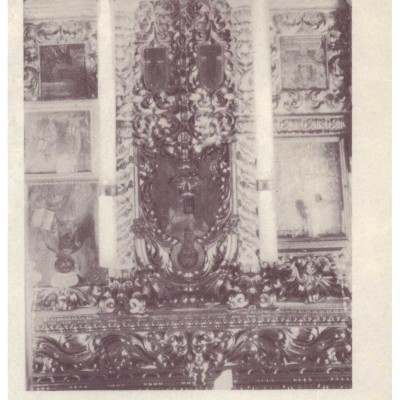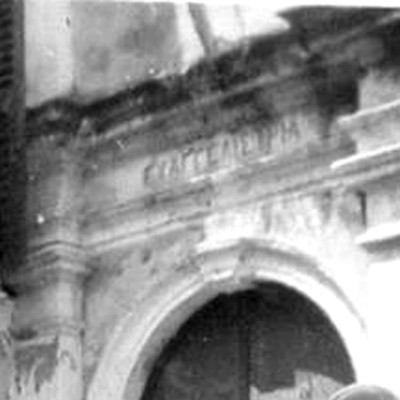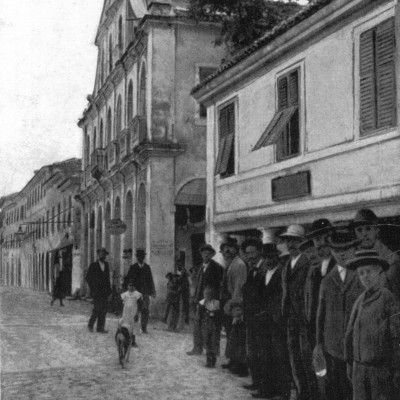Guided tour from "Mesa Meria" of Chora (Stenophoros) to Kamara of Agios Lazaros.
We will follow the route of Stenophoros, which starts from Agios Markos Square, crosses Rouga Square and ends at Kamara. There, Agios Lazaros Str. Is anding and the road that connects the city with most lowland and mountain villages is starting.
Leaving the square of Agios Markos and walking through the Stenophoros (today 21stof Maiou) we met the Gefyri, a wooden bridge under which used to pass the waters of the stream that descended from the Castle and ended up in the sea.
Continuing our journey from Stenophoros we are at Rouga Square where there were arches - columns all the way with the shops, the bakeries of Antiochus-Valais and Panaretos, the Photography shop of Lefas and other houses. During the Venetian rule in this road Gyostra took place. On the same route we meet the Temple of the Evangelistria, which was served by the iconographers Nick. Koutouzis and Nick. Kantounis, the most important representatives of the Ionian School of Painting. The temple was decorated with their works that unfortunately were burned in 1953. In the place of the church, today, the house of Skiadaresis, on 8 Alex. Roma Street. Below was the Church of St. Stefanos. Near the temple, during the earthquake, Teta Stamou remained with her crippled mother trapped in the rubble and despite all the people's exhortations to come out, she remained and was burned alive. Then there was the House of Roma, where the Prefecture offices were housed until the earthquake of '53. There, it was also signed the surrender of the island to the Italian conquerors by the Housing Prefect Petros Metaxas. Below was the Michalitsis Manor and the Martinegou-Gaita Manor, which became a nursing home.
Further down was the square of Analipsis with the homonymous church. Buses were parked in the square, which made the connection with the villages. With the earthquake, the buses were trapped and burned to the ground.
Moving on was the House of Sabbatos or the Jesuit Seminary, where scenes for the film “Red rock” were filmed. Opposite was the Pharmacy of Varvianis and the Pastry Shop of Panaretos.
On the left is the square and the church of Agioi Saranda.
Continuing the route, we enter the area called Tsarouhareika. There were the shops that built and repaired the “tsarouchia” (old traditional shoes) of the peasants. Among other shops was a Jewish paint shop.
Thereafter, we meet the square of Agios Pavlos where the homonymous church of the Varzos Family is located. From this square starts the street of Agios Lazaros, where the temples of Agios Vasileios Katos, Agios Vasileios Panos and Agios Lazaros, where Agios Gerasimos, patron saint of Kefalonia, was vicar.
The parallel street of Agios Lazaros, is Kalvos street, where the temples of Ypapanti and Agios Georgios Petroutsos were before the earthquake, a feast with horse races was held on the day of his memory.
The exit from Kalvos Street led to the area of Lake Makri, where today there are the airport and the villages Ampelokipi, Mouzaki, Pantokratoras, Lithakia, Keri.


